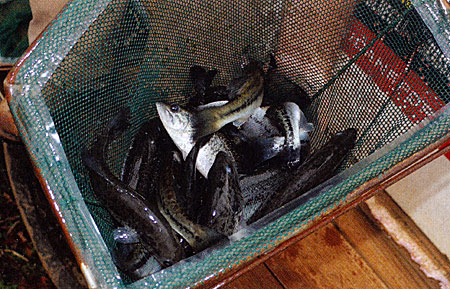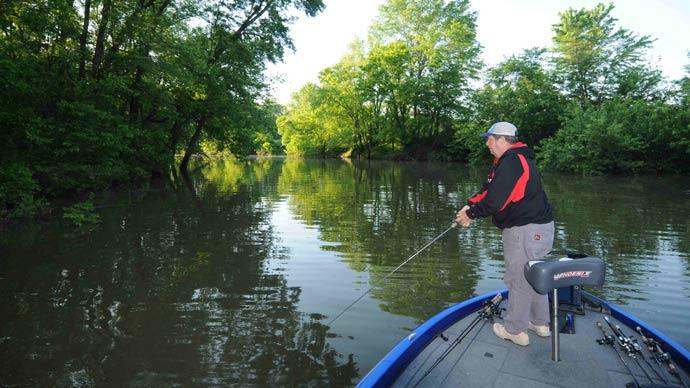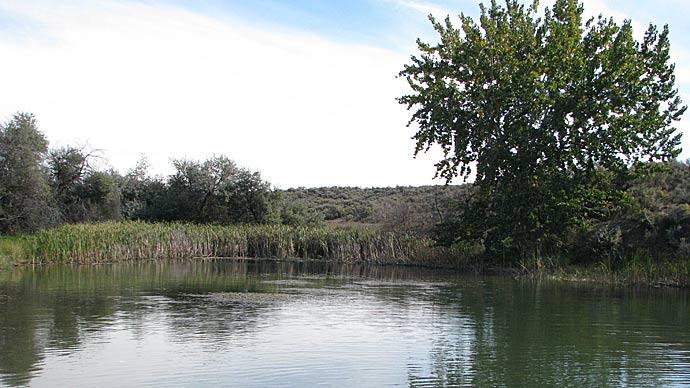
For a variety of reasons the stocking of adult fish, including largemouth bass, into an existing fishery is an option considered by pond managers. Is it a good idea? Does it help? What can one expect? It all depends on the situation and goals. In this article we examine the question and a new study. Some interesting facts and results are included, but in the end it's the application of basic principles that we should remember from this article.
The study is titled Economic and Conservation Impacts of Stocking Wild Florida Bass into Large Florida Lakes by Brandon C. Thompson, Wesley F. Porak, Kimberly I. Bonvechio, Brandon L. Barthel, Micheal S. Allen & Charles M. Adams ill North American Journal of Fisheries Management, Vol. 36:3, pgs. 452-464, 2016. These Florida lakes are part of a connected chain. The two lakes in question are both several thousand acres-plus. Each lake has similarities to a pond, and the same basic principles are applicable. The numbers are bigger of course, but there will be some "I should have expected that" results based on your pond experiences. There is also an "Oh no" result that many of you would have anticipated and avoided, but was missed by the experts.
The reasons for stocking adult fish into an existing fishery can be several, including low reproduction/recruitment, change in goals, depletion of a species (imbalance), genetics, and even owner impatience. Yes some of those were present in this study, fishing, low reproduction/recruitment, and the environment. As you read on, keep that last factor in mind. You should watch out for environmental principles (carrying capacity, biomass, or productive potential). Call it what you want, but you can't fool Mother Nature for long.
Over-fertility of lakes resulting from excess nitrogen, phosphorous, or other nutrients causes lakes to become hypereutrophic, which often results in the loss of submersed aquatic plants and the reduction of nursery habitat for juvenile bass. The lakes in this study had relatively sparse coverage of aquatic plants, low water transparency, and high chlorophyll levels resulting in a recruitment bottleneck for their Florida strain largemouth bass.
The history of attempts to increase bass populations in this area is interesting. In one attempt the number of bass increased after 500,000 fingerling hatchery bass were stocked, but the increase was not significant enough to produce a noticeable change in fishing. Another method often used is stocking larger-sized bass, which is typically more successful than stocking fingerlings, because larger fish are less vulnerable to predation and have more available prey than smaller fish. But the larger, pellet-reared hatchery bass stocked did not survive well enough to significantly improve the bass fishery. Scientists concluded that the use of the pellet-reared bass cultured in concrete raceways had reduced their ability to effectively forage and escape predation, resulting in poor post-stocking survival. Thus the idea to use wild adult bass in these lakes.
In the stocking program a total of 13,932 wild bass (7.8 to 26.9 inches) averaging 12.5 inches were tagged and stocked into one lake, and 10,849 bass (7.8 to 25.6 inches) averaging 12.9 inches were tagged and stocked into the other lake over a three year period. Very few reports of anglers catching the tagged bass were reported. The contribution of stocked bass to the adult population averaged 8.2% during the three stocking years in one lake, and averaged 15.2% for the three years of stocking in the other lake. The number of stocked bass declined to 4.1% one year post-stocking in one lake, and 5% one year post-stocking in the other. In other words, a lot of bass were stocked and most of them had disappeared within one year after the stockings ended.
The total number of age-1 bass showed no positive trend for the entire time period, and a slight negative trend was found for catch rates of age-1 bass. Indications that environmental factors influenced recruitment were found. For example, low amounts of submerged vegetation explained a substantial part of the variation in the number of age-1 bass. There was at least one environmental recruitment bottleneck, which reduced bass numbers. That is, in this writer's opinion, Mother Nature had set the limits, and man could only exceed them for a short time absent major environmental changes to the system. The lake's capacity was limited for purposes of the intended goal.
During the stocking and post-stocking years, electrofishing and angler catch rates did not increase. Stocked fish did contribute to the adult largemouth bass population, making up as much as 10% of the adult fish in one lake, and as much as 27% in the other, but the stockings had little positive or lasting effect on adult catch rates. It is not clear whether the stocked fish added to or replaced existing bass, because there was no observable increase in relative numbers during the stocking period or poststocking. The adult bass stocking program made short-term contributions to the bass populations, but no evidence that stocking either lake led to a lasting increase in the number of adult bass, or any noticeable effect on recruitment or catch rates. It appears that the lakes in their current condition could not sustain and support an ongoing larger bass population.
Unfortunately, in this stocking there was an "Oh-no" event. The area of these lakes contains pure Florida Bass. To get the wild adult bass for stocking, fish were captured from another area with supposedly pure Florida Bass. However, upon testing after the study was over, two of the 51 genetically analyzed fish were found to be intergrade crosses, and were determined to contain some northern bass genetics. Both hybrid/ intergrade individuals had a low proportion of northern bass genes, which suggests they were the result of crosses that occurred generations earlier. If the number of hybrid/intergrade bass in this sample was representative of the entire group of stocked fish, then approximately 1,000 hybrid black bass were stocked into the lakes. Not a good thing to do in one of the few areas still containing pure Florida bass populations, especially when the state of Florida is working hard to preserve the pure strain of its native genetics.
These results were interesting and provide a few lessons for pond owners. You can't fool Mother Nature for long. Your water quality and carrying capacity over time are set, absent significant environmental changes. For decades in these pages of Pond Boss magazine, we've preached the necessity of providing the best habitat for each species of fish. Just adding fish without enough unused capacity is expensive and mostly counterproductive. Don't go beyond your water's ability if you expect a good outcome. If possible, know your fish genetics and don't make an unwanted change. Trying new things and pushing the cutting edge is an option, and often a learning experience well worth the effort. Just keep in mind that nature has its limits, and plan with them in mind. Until next time, keep learning all you can.
Reprinted with permission from Pond Boss Magazine



